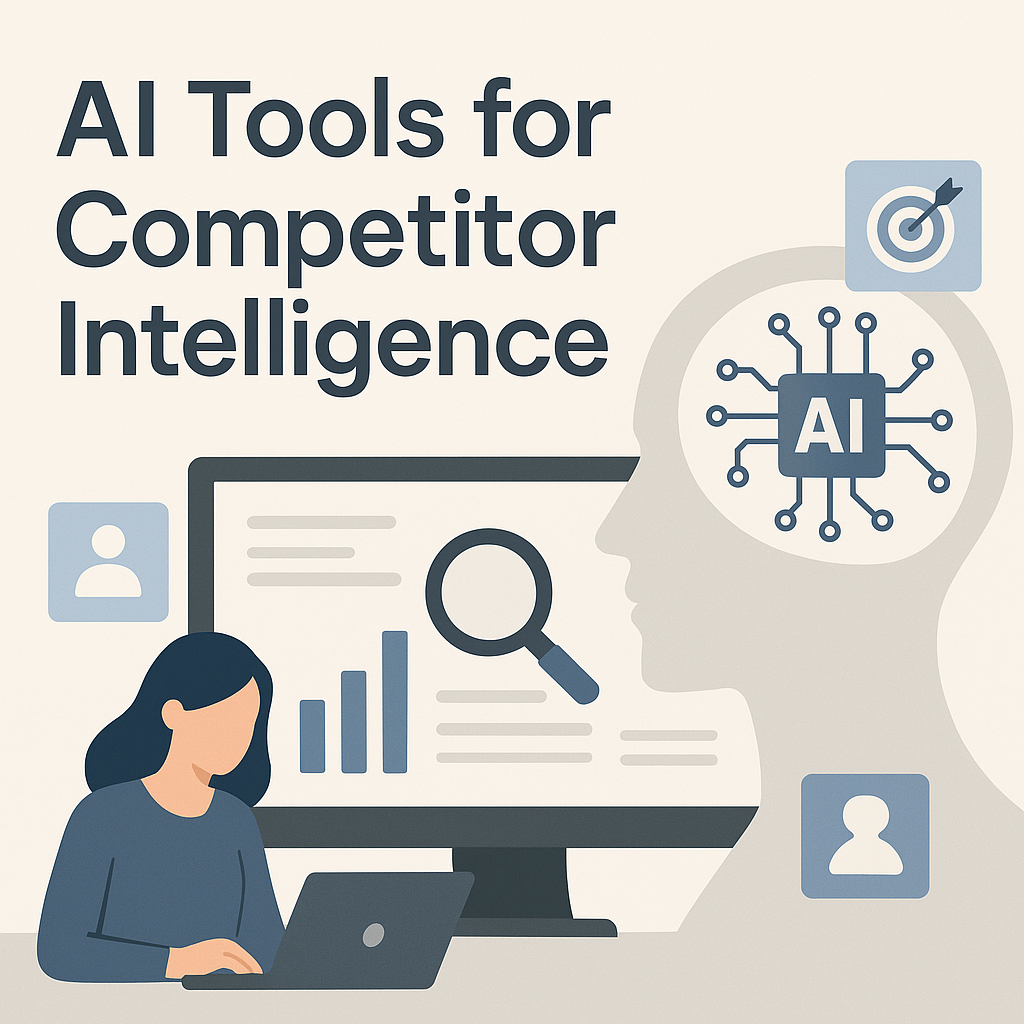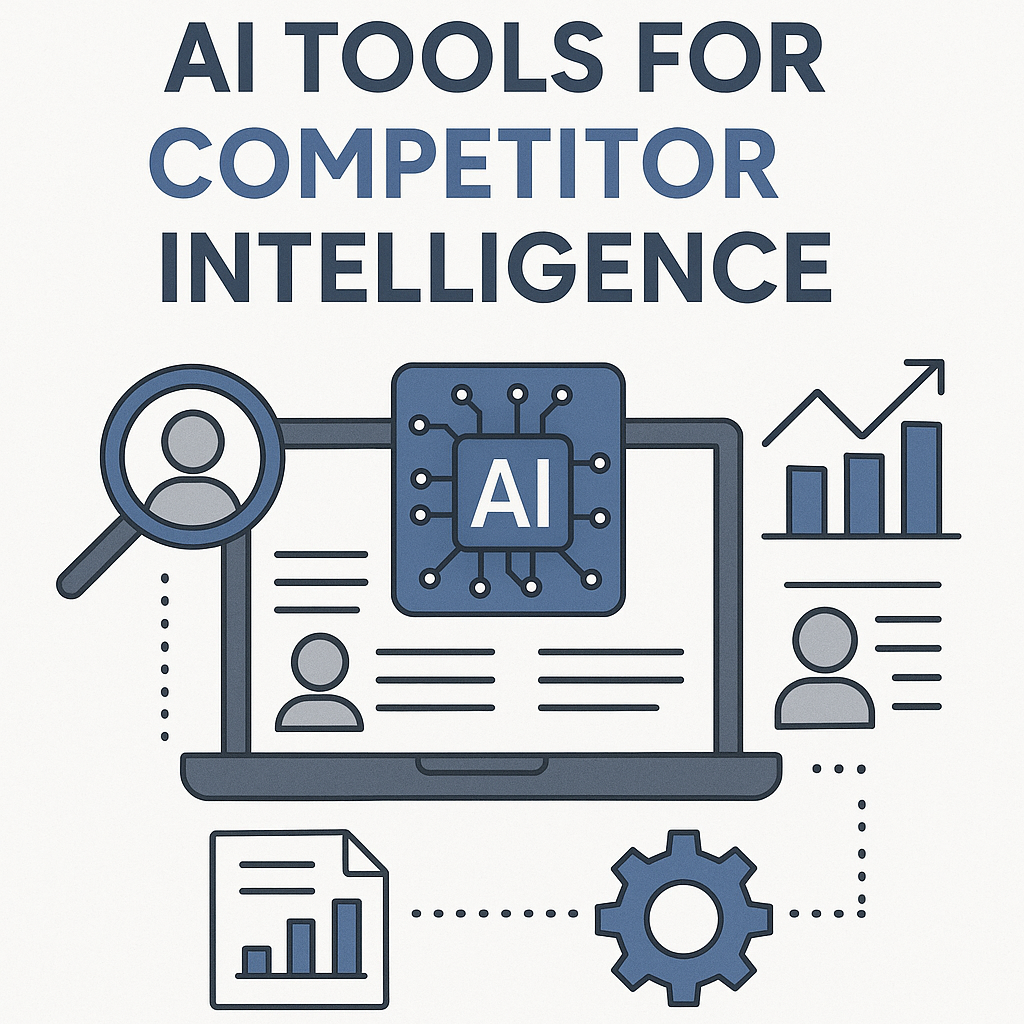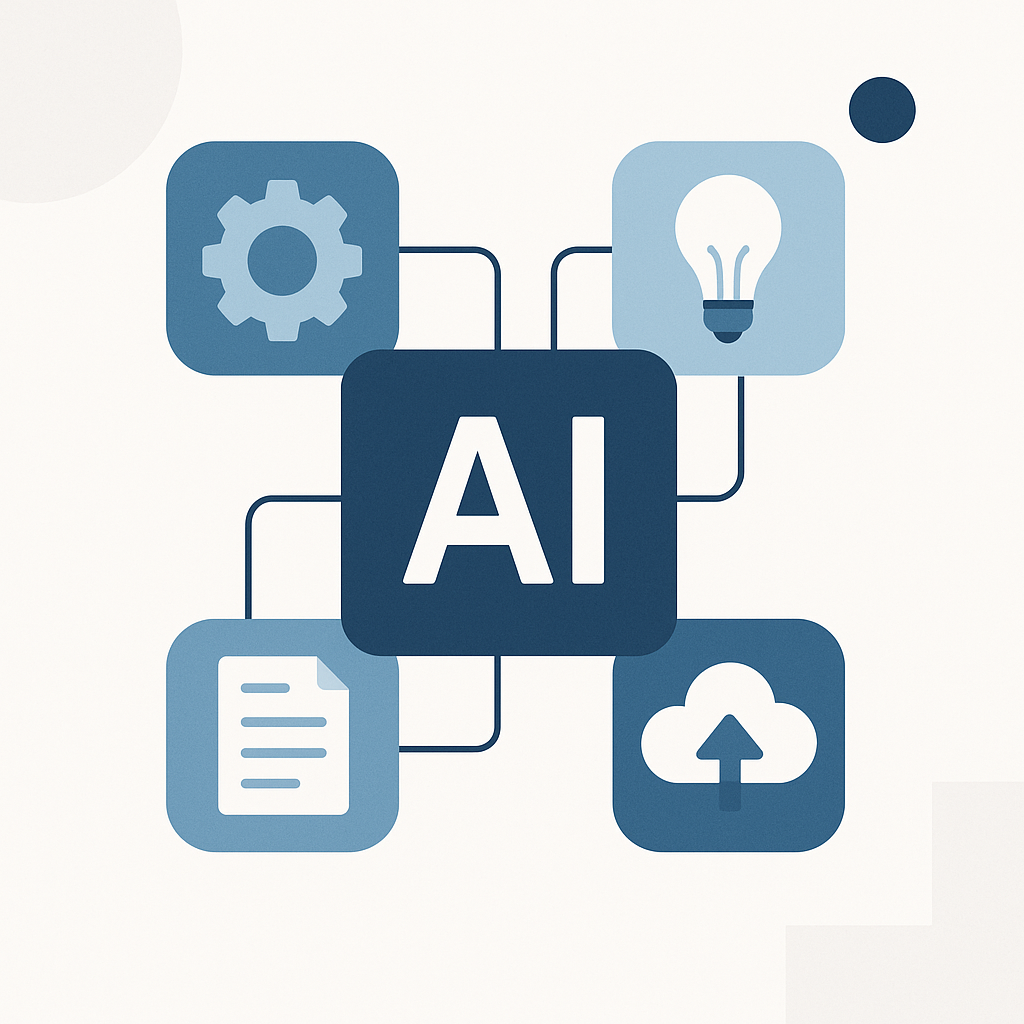AI Tools for Competitor Intelligence

In today's fast-paced business world, staying ahead of the competition isn't just an advantage; it's a necessity. Yet, manually tracking competitors, analyzing their every move, and deciphering market trends can feel like an uphill battle against an avalanche of data. Information overload is real, and the sheer volume of competitor communications, marketing campaigns, and strategic shifts can overwhelm even the most dedicated teams. This is where the transformative power of AI tools comes into play, revolutionizing how businesses approach competitor intelligence. By automating data collection, uncovering hidden insights, and predicting future moves, AI empowers organizations to build a robust AI competitive advantage.
For sales, marketing, and executive leadership, understanding the competitive landscape is paramount. It informs product development, shapes marketing messages, refines sales strategies, and guides overall business direction. However, traditional methods are often too slow, too resource-intensive, or simply unable to cope with the sheer scale and velocity of modern market data. This article delves into how cutting-edge AI tools can be leveraged to not only streamline competitor analysis but also to extract actionable intelligence that drives strategic success.
How AI Tools Automate Competitor Data Gathering
The foundation of effective competitor intelligence lies in comprehensive data. Historically, gathering this data involved significant manual effort: subscribing to newsletters, monitoring social media feeds, reading industry reports, and sifting through news articles. This process was not only time-consuming but also prone to human error and missed opportunities.
AI tools excel at automating this grunt work. They can continuously scan and collect data from a vast array of sources, including:
- Websites and Blogs: Monitoring for product updates, pricing changes, new content, and company announcements. Tools like Visualping are excellent for tracking website changes.
- Social Media Platforms: Analyzing posts, comments, engagement metrics, and sentiment across platforms like Twitter, LinkedIn, Facebook, and Instagram.
- News Outlets and Press Releases: Keeping track of media mentions, new funding rounds, executive appointments, and strategic partnerships.
- Forums and Review Sites: Gathering customer feedback and identifying common pain points or praise related to competitors' products and services.
- Job Boards: Identifying hiring trends and areas of strategic investment for competitors.
Machine learning algorithms can process this unstructured data, categorize it, and identify relevant information far more efficiently than any human team. This automation ensures that businesses have a constant, up-to-date stream of competitive information, forming the bedrock of informed decision-making. For businesses looking to manage and analyze vast amounts of incoming communications, an automatic email manager for competitor intelligence can be invaluable, helping to filter and organize relevant competitor updates directly into your workflow.
Leveraging AI for Competitor Sentiment Analysis
Beyond just collecting what competitors are saying or doing, it's crucial to understand how their target audience perceives them. This is where AI-powered sentiment analysis shines, using Natural Language Processing (NLP) to interpret the emotional tone and opinions expressed in text data.
How does it work? AI algorithms can analyze customer reviews, social media comments, forum discussions, and even news articles mentioning a competitor. They can identify keywords, phrases, and contextual nuances to determine whether the sentiment is positive, negative, or neutral. This goes beyond simple keyword matching; it understands sarcasm, context, and the overall feeling conveyed.
For example, an AI sentiment analysis tool could:
- Gauge public reaction to a competitor's new product launch.
- Identify common complaints about a competitor's customer service.
- Understand what features customers love most about a competitor's offering.
- Detect shifts in public perception following a marketing campaign.
Understanding competitor sentiment provides invaluable insights into their strengths and weaknesses from the customer's perspective. This information can directly inform your own product development, customer service improvements, and marketing messaging. As noted by Sprout Social, competitive intelligence tools can use AI to pinpoint strengths and weaknesses by tracking customer sentiment in real time.
AI-Powered Trend Identification in Competitor Strategies
The market is constantly evolving, and so are competitor strategies. AI's ability to recognize patterns in large datasets makes it an indispensable tool for identifying emerging trends before they become mainstream.
Machine learning algorithms can analyze historical data and current activity to spot subtle shifts and predict future directions. This could involve:
- Product Development Trends: Identifying if competitors are increasingly investing in or talking about specific technologies or features.
- Marketing and Advertising Shifts: Noticing changes in ad spend allocation, new campaign themes, or shifts in target demographics.
- Pricing and Packaging Strategies: Detecting patterns in competitor pricing adjustments or new product bundles.
- Content Strategy Evolution: Recognizing if competitors are focusing on different types of content or new distribution channels.
- Talent Acquisition Patterns: Identifying if competitors are hiring extensively in specific departments, indicating strategic focus areas.
For instance, by analyzing job postings, AI can reveal a competitor's pivot towards AI development or a new market segment. Similarly, by monitoring social media and news, AI can highlight a competitor’s increasing focus on sustainability or a particular customer demographic. This proactive identification of trends allows businesses to adapt their strategies, seize opportunities, and mitigate potential threats. Tools like Sembly AI can offer meeting insights alongside competitive intelligence, helping to decode strategic discussions.
Practical AI Tools for Sales and Marketing Teams
Sales and marketing professionals are on the front lines, directly engaging with customers and competing for market share. AI tools provide them with a significant edge by offering actionable insights and automating repetitive tasks.
AI for Sales Intelligence
For sales teams, AI can:
- Identify Prospecting Opportunities: Analyze competitor customer bases or market signals to find untapped leads.
- Understand Competitor Sales Tactics: Monitor competitor sales collateral, pricing pages, and customer testimonials to learn their pitches and value propositions.
- Forecast Market Trends: Predict which industries or customer segments will grow, allowing sales teams to focus their efforts.
- Personalize Outreach: Using insights from competitor analysis to tailor pitches and address specific customer needs that competitors might be overlooking.
By understanding what resonates with customers in the market, sales teams can refine their approach, overcome objections more effectively, and ultimately close more deals. This is where robust AI for sales intelligence becomes critical.
Marketing AI Tools
Marketing teams can leverage Marketing AI tools in numerous ways:
- Campaign Analysis: Monitor competitor advertising campaigns, social media strategies, and content marketing efforts to identify what's working and what's not.
- SEO and Content Optimization: Analyze competitor keyword strategies, backlink profiles, and content performance to inform your own SEO and content creation efforts. Tools like SEMrush and Ahrefs, mentioned by SuperAGI, are powerful for this.
- Social Listening: Track brand mentions, industry conversations, and competitor activities across social platforms to gauge sentiment and identify engagement opportunities.
- Customer Segmentation: Understand how competitors are segmenting their audiences to refine your own targeting.
By leveraging AI, marketing teams can ensure their campaigns are more targeted, effective, and efficient, leading to better ROI and stronger brand positioning. Furthermore, managing the influx of market data and internal communications efficiently is key. Beyond direct competitor tracking, AI can also enhance your internal communication efficiency, freeing up valuable time. For instance, tools like an ai executive assistant can help manage incoming information, prioritize communications, and even extract key insights from emails, indirectly supporting your competitive intelligence efforts by making your team more efficient. This focus on efficiency can also be seen in how teams manage follow-ups; understanding effective follow up email templates can be informed by analyzing what competitors use and how customers respond, further enhancing sales and marketing outreach.
Integrating AI Insights into Your Business Strategy
The ultimate goal of competitor intelligence is to inform and improve business strategy. AI-driven insights, when effectively integrated, can lead to significant strategic advantages.
Business intelligence AI platforms can synthesize data from various AI-powered competitor analysis tools, presenting a holistic view of the market landscape. This allows leadership to make more informed decisions across departments:
- Product Development: Identify market gaps or unmet customer needs highlighted by competitor weaknesses or customer feedback.
- Pricing Strategies: Understand competitor pricing models and customer price sensitivity to optimize your own pricing.
- Market Entry and Expansion: Assess competitor presence and success in new markets to inform expansion plans.
- Marketing and Sales Messaging: Refine value propositions and messaging based on competitor positioning and customer sentiment.
- Innovation and R&D: Spot emerging technologies or trends that competitors are investing in, guiding your own innovation roadmap.
For example, if AI analysis reveals that a competitor is gaining traction by offering a more streamlined user experience, a company can prioritize UX improvements in its product roadmap. If competitor marketing shows a strong focus on customer testimonials, a business might amplify its own customer success stories. The key is to move beyond raw data and translate AI-generated insights into concrete, actionable strategies that drive business growth.
Addressing Challenges and Ethical Considerations of AI in Competitor Analysis
While the benefits of AI in competitor intelligence are clear, it's crucial to approach its implementation with awareness of potential challenges and ethical considerations.
Data Privacy and Security
When gathering information, especially customer feedback or employee discussions, it's vital to ensure compliance with data privacy regulations like GDPR or CCPA. AI tools should be used to analyze publicly available information and avoid any form of unauthorized access or data scraping that could violate privacy laws or terms of service.
Bias in AI Algorithms
AI models are trained on data, and if that data contains biases, the AI's analysis can also be biased. For example, sentiment analysis might misinterpret nuances in certain dialects or cultural expressions, leading to skewed perceptions of competitor reception. Regularly auditing AI outputs for bias is essential.
Misinterpretation and Over-reliance
AI is a powerful tool, but it's not infallible. Insights derived from AI should be cross-referenced with human expertise and qualitative judgment. Over-reliance on AI without critical evaluation can lead to strategic missteps. For instance, a sudden spike in competitor mentions might be due to a viral social media campaign or a minor news event; human analysts can discern the true significance.
Ethical Use of Information
The goal of competitor intelligence is to understand the market and improve one's own offerings, not to engage in unfair or deceptive practices. Ethical considerations include avoiding industrial espionage, respecting intellectual property, and maintaining transparency in business dealings. Tools like US Chamber often highlight the importance of using competitive analysis tools responsibly.
By being mindful of these issues, businesses can harness the power of AI for competitor intelligence responsibly and effectively.
The Future of AI in Gaining a Competitive Edge
The role of AI in competitor intelligence is continuously expanding. We can expect future advancements to include:
- Predictive Analytics: AI will become even more adept at forecasting competitor moves, market shifts, and customer behavior, offering a more proactive approach to strategy.
- Hyper-Personalized Insights: AI will tailor competitor intelligence reports to the specific needs and roles of individual users within an organization.
- Automated Strategy Generation: AI might eventually assist in formulating strategic recommendations based on comprehensive competitive analysis.
- Real-time Strategy Adjustment: Businesses could use AI to dynamically adjust their own strategies in response to immediate competitor actions or market changes.
- Deeper Integration with Internal Operations: AI will likely become more integrated with CRM, ERP, and marketing automation platforms, creating a seamless flow of intelligence across the organization.
The ongoing evolution of AI tools promises to make competitor analysis more sophisticated, predictive, and actionable than ever before, further solidifying its role in securing a lasting AI competitive advantage.
Conclusion
In the complex and ever-changing business arena, understanding your competitors is not optional; it's foundational. AI tools have emerged as indispensable allies, transforming the arduous task of competitor intelligence into a streamlined, insightful, and strategic process. From automating data gathering and performing deep sentiment analysis to identifying subtle trends and empowering sales and marketing teams with actionable insights, AI equips businesses with the knowledge needed to navigate and dominate their markets.
By embracing these advanced capabilities, organizations can move beyond reactive responses to proactive strategy formulation. They can identify opportunities, mitigate risks, and ultimately build a sustainable AI competitive advantage. Whether you're a startup looking to disrupt an established market or a large enterprise seeking to maintain leadership, integrating AI into your competitor intelligence framework is no longer a luxury, but a strategic imperative for future success.



